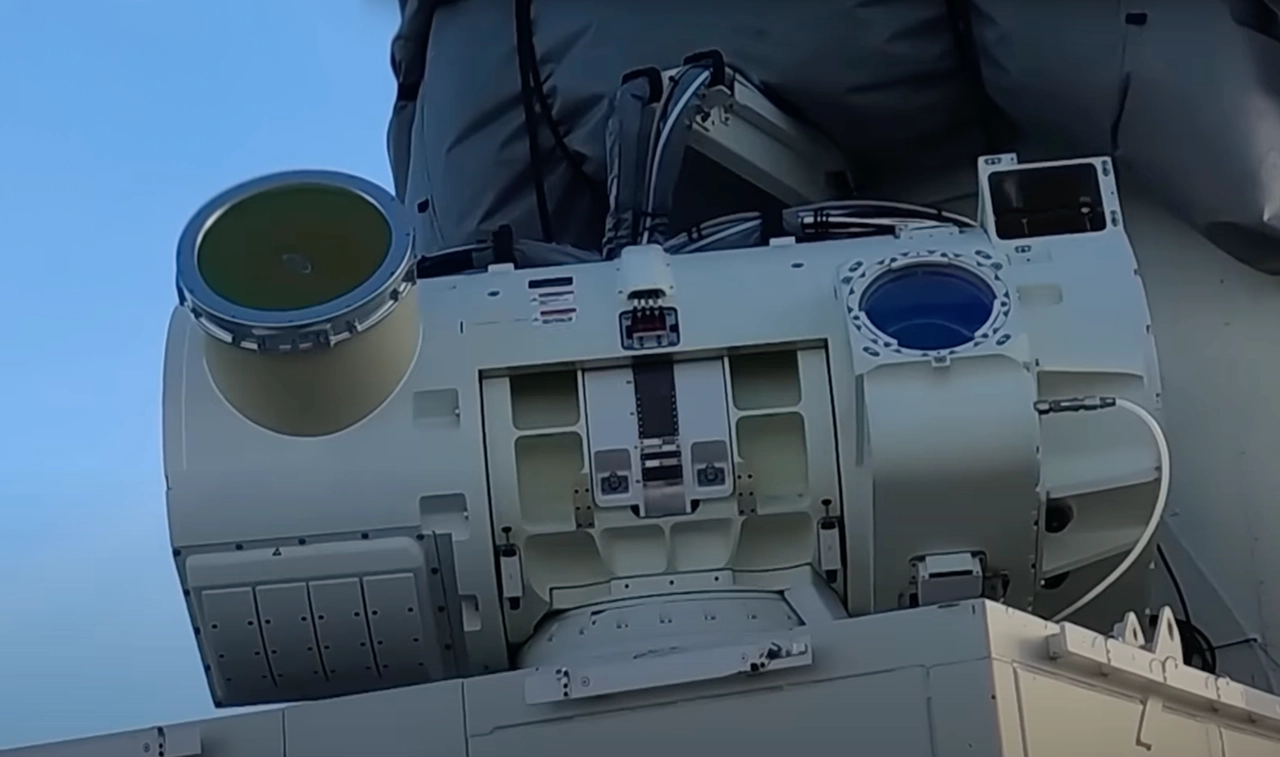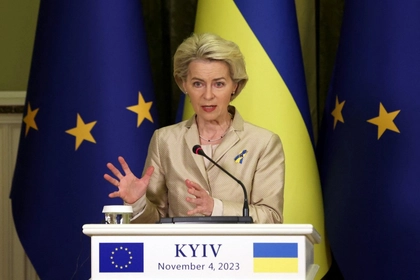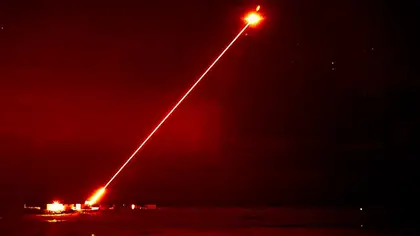UK Defence Secretary Grant Shapps said he was considering sending prototypes of the “DragonFire” laser weapon to Ukraine ahead of its anticipated 2027 addition to the UK’s arsenal.
The DragonFire Laser Directed Energy Weapons (LDEW), is a project of the UK government’s Defence Science and Technology Laboratory (DSTL) and private sector defense firms MBDA, Leonardo and QinetiQ. The LDEW is intended to be deployed on both warships and future armored personnel carriers.
JOIN US ON TELEGRAM
Follow our coverage of the war on the @Kyivpost_official.
It fires a concentrated beam of energy invisible to the human eye that focuses 37 channels of 1.5kW laser beams arranged in a hexagonal array, merged, and amplified by mirrors. It was first successfully tested in the UK as early as 2022.
As reported by the Telegraph, its range is classified, but it has been seen destroying drones and causing mortars to explode after less than five seconds of exposure during trials.
DSTL scientists say DragonFire is already a game changer that can hit a target the size of a £1 coin at around one kilometer and operates at a frequency that can interfere with missile communications and power supply.
Shapps said the UK aimed to speed up its development and deploy the weapon before the 2027 target since delays have been costly, and the UK is considering sending the prototype to Ukraine even before it’s fully operational.


EU Transfers €1.5 Bln Raised From Russian Assets for Ukraine
“What I want to do is speed up what would usually be a very lengthy process, possibly up to 10 years, down to a much shorter timeframe and get it deployed, potentially on ships and potentially on land.
“I’m absolutely certain that what we’ve got going on here is very special, and a level that other countries are unlikely to be replicating because it’s so cutting-edge. The product itself is genuinely years ahead,” said Shapps during a trip to the DragonFire lab on Thursday, April 11.
However, Shapps provided no timeline as to when the weapon might potentially reach Kyiv.
“Let’s say that it didn’t have to be 100 percent perfect in order for Ukrainians, perhaps, to get their hands on it. 2027 is still the date [for the British military], as of this moment, but of course, I’ll look to see what we can do to speed it up,” Shapps added.
In March, the British Ministry of Defence published a video of its successful trial against an aerial target with each shot costing around £10 ($12.5). Operating at the speed of light, it is also speculated that laser weapons such as DragonFire could counter high-speed targets such as hypersonic missiles, which fly at speeds between Mach 5 and Mach 10.
DragonFire 🔥 is a new laser being developer by @dstlmod for the 🇬🇧 military.
— Ministry of Defence 🇬🇧 (@DefenceHQ) March 11, 2024
Watch its first high-power firing against an aerial target.
👇👇👇https://t.co/D5sqIciICS pic.twitter.com/oI1xG9sK87
The low cost when in use could provide a significant advantage over traditional air defense, where a Patriot missile Ukraine has been relying on to counter high-speed Russian missiles is believed to cost $4 million a shot, according to a US Congressional Research Service (CRS) report.
The ongoing war in Ukraine has also showcased the use of drones costing as low as $260 against high-value targets such as armored vehicles costing millions, prompting the West to seek more cost-effective options should a wider conflict break out in the near future.
Despite the advantages, directed energy weapons such as DragonFire generally have a shorter range than conventional kinetic weapons, and adverse weather conditions, such as fog and storms, can severely degrade their range and effectiveness due to energy loss, which is likely the main challenge DragonFire will have to overcome in its development.
You can also highlight the text and press Ctrl + Enter






